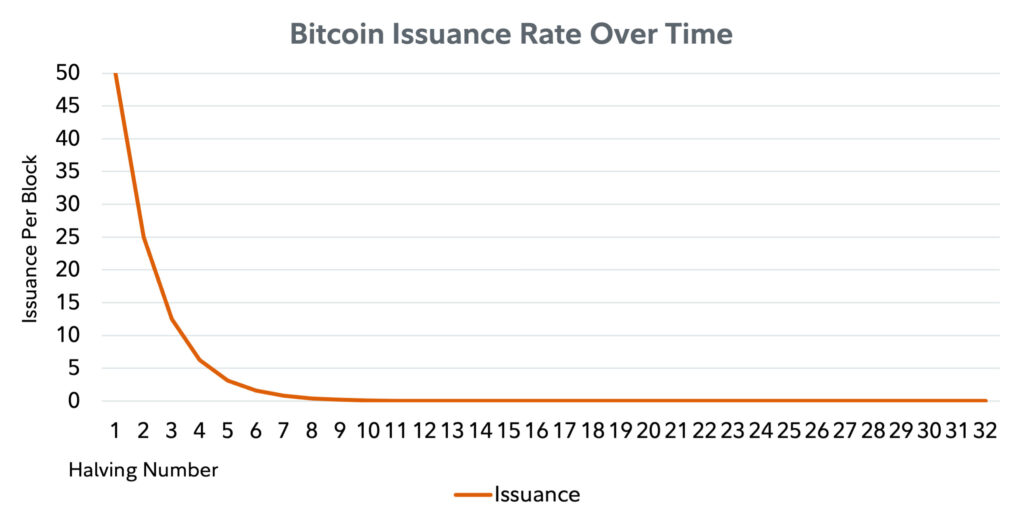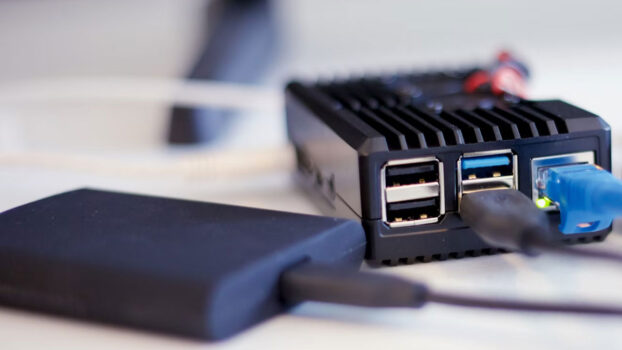Dive into the heart of Bitcoin’s resilience and innovation with us as we unravel the mystery of “what is a bitcoin node.” These powerhouses ensure the network remains decentralized and secure, processing every transaction with unmatched integrity.
For enthusiasts, tech aficionados, and savvy investors, understanding nodes is key to appreciating Bitcoin’s revolutionary impact. We’ll explore their role, why they’re the backbone of blockchain’s security, and how they empower users worldwide. Get ready for a journey into the core of Bitcoin’s ecosystem.
What Is a Bitcoin Node? A Definition
A Bitcoin node is a computer connected to the Bitcoin network. These computers play a crucial role in maintaining the ledger’s accuracy and security. They follow a set of rules and communicates with each other to agree on the state of the Bitcoin blockchain.

The blockchain, a.k.a. timechain, is a digital ledger that records every Bitcoin transaction ever made. Nodes ensure this ledger is kept honest and up-to-date. They verify transactions and blocks (groups of transactions) against the Bitcoin protocol’s rules. If everything checks out, they add these transactions to their copy of the blockchain. This process is crucial for preventing fraud and ensuring that no one spends their Bitcoins more than once.
Types of Bitcoin Nodes
Let’s explore the various types of nodes that form the backbone of the infrastructure of the Bitcoin network. Each plays a unique role in keeping Bitcoin decentralized and secure.
Bitcoin Full Nodes
By storing a complete copy of the blockchain, a full node has the entire history of Bitcoin transactions at its fingertips. This comprehensive ledger allows it to independently verify any transaction without needing to trust any other peer in the network.
But its role extends beyond mere record-keeping. It serves as a bulwark against attempts to alter the Bitcoin network’s rules. If a miner or group of miners tries to introduce a block that violates Bitcoin’s consensus rules, it will reject this block, ensuring the integrity and continuity of the blockchain.
Lightweight or SPV (Simplified Payment Verification) Nodes
Light nodes only download the block headers. This approach drastically reduces their storage and bandwidth requirements. As a result, they are ideal for users with limited resources, such as those on mobile devices or with restricted internet access.
The primary role of lightweight nodes is to confirm the inclusion of transactions in the blockchain by consulting block headers. This process relies on trusting that the majority of the network’s mining power acts honestly, a reasonable assumption given Bitcoin’s secure and competitive mining environment.
Mining Nodes
Mining nodes perform the critical function of mining, which involves confirming transactions and adding them to the blockchain.
The process is both computationally intensive and competitive. And it requires significant processing power. Newly minted Bitcoins and transaction fees incentivize miners to contribute their computational resources to the network.
Mining nodes require the full blockchain to verify the transactions they include in blocks. However, their defining feature is the mining process itself, which secures the network and introduces new Bitcoins into circulation.

For those intrigued by the prospect of mining and eager to start without upfront costs, we’ve got you covered. Dive deeper into our comprehensive guide on how to begin mining Bitcoin for free, a perfect starting point for newcomers.
Archival Nodes
Archival nodes store the entire history of Bitcoin transactions, including every block ever mined and every transaction ever processed. This complete record makes them invaluable resources for the network, providing a level of data redundancy and security that ensures the blockchain’s history is preserved and accessible.
Their specific role within the Bitcoin network is twofold. First, they support the network’s resilience by allowing for the recovery of blockchain data in case of data loss. Second, they assist in bootstrapping new nodes by providing them with the historical data they need to synchronize with the network.
Importance of Bitcoin Nodes
Nodes are the linchpins of the Bitcoin network, ensuring its security, integrity, and the coveted principle of decentralization.
Their distributed nature means that no single entity has control over the entire network, a stark contrast to traditional financial systems. This decentralization is crucial for security; it makes the Bitcoin network resilient to attacks and censorship. If one fails, others step in, ensuring the network’s uninterrupted operation and the immutable record of transactions.
Full nodes, in particular, play a vital role in maintaining the network’s integrity. By validating transactions and blocks against the protocol rules, they prevent invalid transactions and blocks from being added to the blockchain. This verification process is fundamental to preventing double-spending and ensuring that every Satoshi spent is accounted for correctly.
Moreover, nodes contribute to the consensus mechanism of Bitcoin, where changes to the protocol require widespread agreement among them. This consensus ensures that any updates to the Bitcoin network are reflecting the collective will of its users, rather than the dictates of a central authority.
The sheer number of peers scattered across the globe also enhances the security of the Bitcoin network. With them, the network achieves a level of redundancy and fault tolerance that centralized systems can’t match. This global distribution not only makes Bitcoin more secure, but also more accessible, allowing anyone with an internet connection to participate in the network.
How to Run a Bitcoin Core Node
Here’s a basic guide to get you started:
Hardware Requirements:
- A computer with at least 1 TB of free disk space (to accommodate the full blockchain size, which continues to grow) and a minimum of 2 GB of RAM. However, more is recommended for optimal performance.
- A high-speed internet connection with at least 200 GB of data available per month. Unlimited bandwidth is ideal due to the continuous data exchange.
Software Requirements:
- The Bitcoin Core software, the official Bitcoin client, can be downloaded from bitcoin.org. This software downloads and validates the entire blockchain.
Setting Up:
- Download and Install Bitcoin Core: Navigate to the official Bitcoin website and download the Bitcoin Core software for your operating system.
- Blockchain Download: Upon launching Bitcoin Core for the first time, it will begin downloading the blockchain. This process can take several days, depending on your internet speed.
- Configuration: You may need to configure your router or firewall to allow inbound connections. Additionally, consider setting up a static IP address or using a dynamic DNS service to ensure it remains accessible even if your IP address changes.
- Running Your Node: After the blockchain has been fully downloaded, the software will automatically start verifying transactions and blocks. Keep it running as much as possible to contribute to the network’s health and security.
Challenges and Benefits of Running a Bitcoin Node
Running a Bitcoin node comes with its set of challenges and benefits, making it a commitment not taken lightly but with significant rewards for the individual and the network.
Challenges:
- Hardware and Storage Space: The need for substantial disk space, which must increase over time as the blockchain grows, can be a barrier for some. Additionally, a reliable computer with a robust internet connection is non-negotiable.
- Bandwidth Usage: Downloading the entire blockchain and sharing blocks and transactions with peers can consume a considerable amount of bandwidth. This might be a concern for those with limited internet data plans.
- Maintenance: Occasional updates and maintenance is an ongoing commitment that can be time-consuming for node operators.
Benefits:
- Network Security and Integrity: You help secure the Bitcoin network, ensuring transactions are verified, and blocks are added correctly. Every additional node increases the network’s redundancy and resilience against attacks.
- Decentralization: Nodes are crucial for maintaining Bitcoin’s decentralized nature. The more there are in operation, the harder it is for any single entity to control or manipulate the network.
- Privacy and Sovereignty: It allows you to verify transactions independently without relying on third-party services. It puts you in full control of your Bitcoin transactions, aligning with the ethos of self-sovereignty that Bitcoin promotes.
Frequently Asked Questions
The exact number of Bitcoin nodes fluctuates due to the decentralized nature of the network, with some coming online and going offline at any time. However, estimates suggest there are several thousands globally, with the figure often cited in the range of 10,000 to 15,000. Real-time statistics are available on Bitnodes, for example.
Anyone with the necessary hardware and internet connection can run a Bitcoin node. There are no restrictions or permissions required to participate.
A Bitcoin Lightning node is part of the Lightning Network, a second-layer protocol built on top of the Bitcoin blockchain. It routes payments through the network, significantly increasing Bitcoin’s transaction capacity.
Conclusion
We’ve delved into the critical components that keep the Bitcoin network robust, secure, and decentralized.
Each node type plays a unique role in sustaining the ecosystem’s health and integrity, by:
- Validating and maintaining the entire blockchain;
- Ensuring wider network participation;
- Securing the network through computational work.
The decentralized tapestry of Bitcoin nodes is what sets Bitcoin apart from traditional financial systems, ensuring no single point of control or failure. This architecture not only enhances security and resilience against attacks, but also embodies the principles of openness and democratization that are central to Bitcoin’s ethos.
Running a Bitcoin node allows individuals to contribute directly to the network’s security and decentralization. Despite the challenges associated with hardware requirements and bandwidth consumption, the benefits of enhanced privacy, transaction verification autonomy, and the reinforcement of Bitcoin’s decentralized nature are compelling reasons to participate.
Understanding “what is a Bitcoin node” is fundamental to grasping how Bitcoin operates as a decentralized network. It’s a testament to the collective strength and innovation of the Bitcoin community, ensuring the network remains secure, transparent, and true to its foundational principles.
